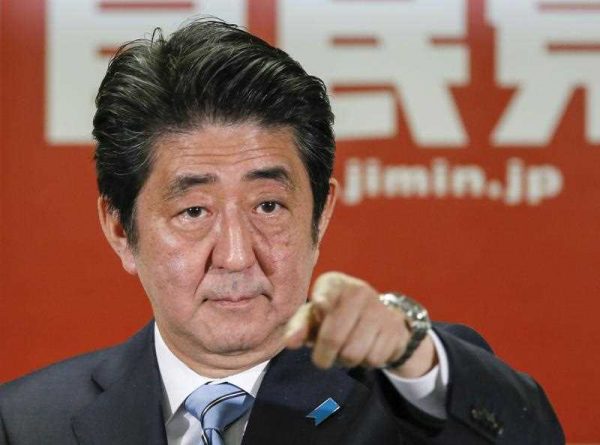Prime Minister Shinzo Abe put the nation’s voters through the election to end up with what he virtually had in the first place — a gain of just one seat for the coalition (326 as opposed to 325 in 2012), with a marginal loss for the LDP (291 seats in 2014 compared to 294 in 2012) and a small gain for the Komeito (35 seats as opposed to 31 in 2012). Komeito’s relative success suggests that, once again, its affiliated Buddhism-based religious organisation, Soka Gakkai, reliably mobilised its supporters en masse to vote for the party. Increased support for the Komeito also suggested that voters sought a stronger in-built check on Abe from inside the administration.
Besides the Komeito, the other big winner from the election was the Japan Communist Party (JCP). It increased its seat tally and broke the barrier of winning a plurality in a single-member district (SMD) seat, in Okinawa. The JCP more than doubled its presence in the Diet: a performance that reflects its role in Japanese electoral politics as the primary recipient of the protest vote.
But the broader picture suggests that a sufficient, but not overwhelming, number of Japanese voters thought that the LDP–New Komeito coalition had performed well enough to keep it in office, or at least was better than the alternatives. In this respect, the election marks an opposition failure rather than a ruling coalition success. Patently, an insufficient number of voters were prepared to entrust the running of government to any of the opposition parties, including the major alternative ruling party, the Democratic Party of Japan (DPJ). Moreover, the low voter turnout was symptomatic of a public in which half the electorate thought no party was worth voting for.
Although the election confirms that the DPJ is still ‘under reconstruction’, it won 16 more seats (13 of these were SMDs gained from the LDP) compared with its 2012 performance and in that sense, has taken the first step towards re-establishing its position as the major alternative ruling party.
It will benefit greatly from Banri Kaieda’s resignation as party president. His profound lack of charisma as a leader was a dead weight on the party. Other ‘leaders in waiting’ such as Seiji Maehara, Katsuya Okada and Goshi Hosono each have a very secure electoral base, winning solid voter support in their constituencies. Nor were the Abe leadership’s campaign attacks on Yukio Edano in his own constituency successful. But the DPJ’s negative politics — criticising the Abe agenda without offering a credible alternative — lacked the power to attract voters en masse. Both its manifesto and party organisation were under-prepared for the election.
The SMD system introduced into the Lower House in 1994 as a result of electoral reform should theoretically encourage policy-based competition between two major alternative ruling parties. This will continue to work in the DPJ’s favour at the same time as the regional blocs chosen by proportional representation will continue to support the existence of smaller parties such as the Komeito, Japan Innovation Party (JIP) and JCP. But it may be many years before the DPJ can demonstrate to voters that it deserves the mantle of power.
What the LDP’s victory suggests is that the Abe administration is still to some extent buoyed by public expectations as it was in 2012 — the promise of something better if Abenomics works. The Abe administration has certainly been given the benefit of the doubt, but this will be for the last time. In the campaign Abe successfully avoided the most contentious policy issues such as the Trans-Pacific Partnership (TPP), agricultural policy reform, regional revitalisation and the restarting of the nuclear power plants. Instead, Abe framed the debate as all about Abenomics. Nevertheless, these policy issues are not going to go away and will need to be wrestled with in ensuing days.
What is more, the prime minister and his government are not going to have it all their own way because they will have to deal with opposition from both non-ruling parties and from within the ruling coalition and LDP itself. A preponderance of seats in the Lower House is not necessarily a recipe for successful executive-led government in Japan, as it is in other parliamentary cabinet systems that operate according to Westminster principles. It is the opposition from within the ruling coalition and ruling party that will make a difference to the actual policies adopted by the administration, both acting as a filter for policy initiatives coming from the prime minister and his office.
In particular, the fact that the LDP won a sweeping victory in the general election does not mean that differences of opinion within the ruling on many contentious policy issues have been settled. These include not only the contents of the TPP and regulatory reform, but also tax reform and other policies closely related to Abenomics growth strategy, or ‘third arrow’. The key issue will be the extent to which Abe’s election victory affects the balance of power between the ruling party and the prime minister’s office.
Aurelia George Mulgan is Professor at the University of New South Wales, Australian Defence Force Academy, Canberra.


The LDP was given a new mandate to govern in the election, albeit by a record-low voter turnout. There is simply no viable alternative as the Japanese were deeply dissatisfied with DPJ rule.
Most Japanese want the Abe administration to pursue its right-wing nationalistic agenda in dealing with China, the Koreas and Russia about historical issues and unresolved territorial disputes.
And many Japanese are also willing to give the economic reforms implemented the past few years more time to see if they will provide lasting benefits for Japan’s economy.